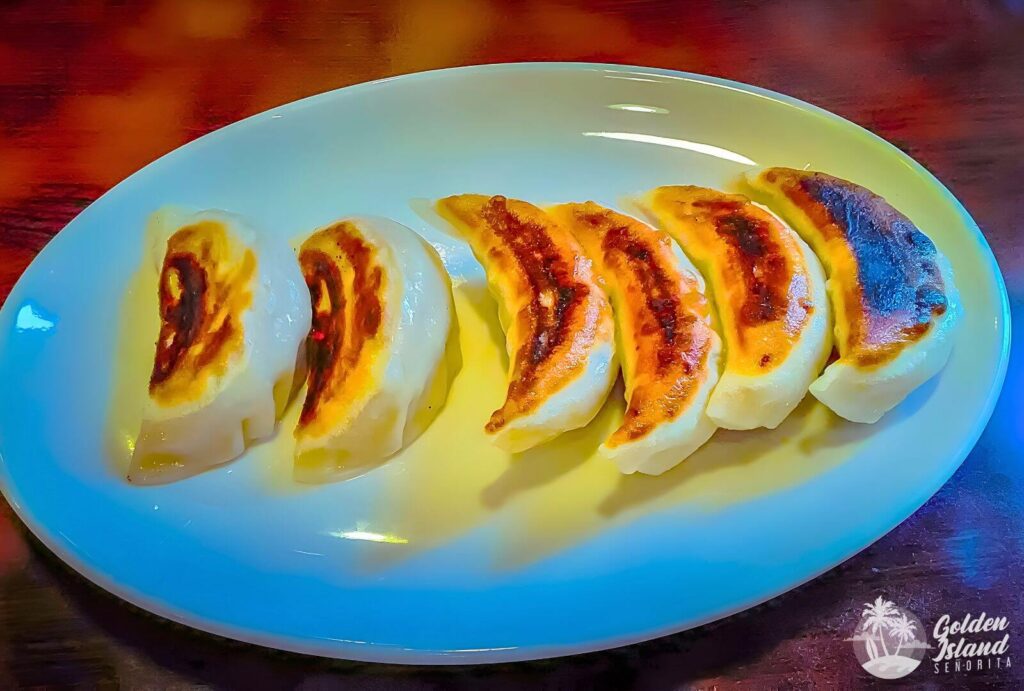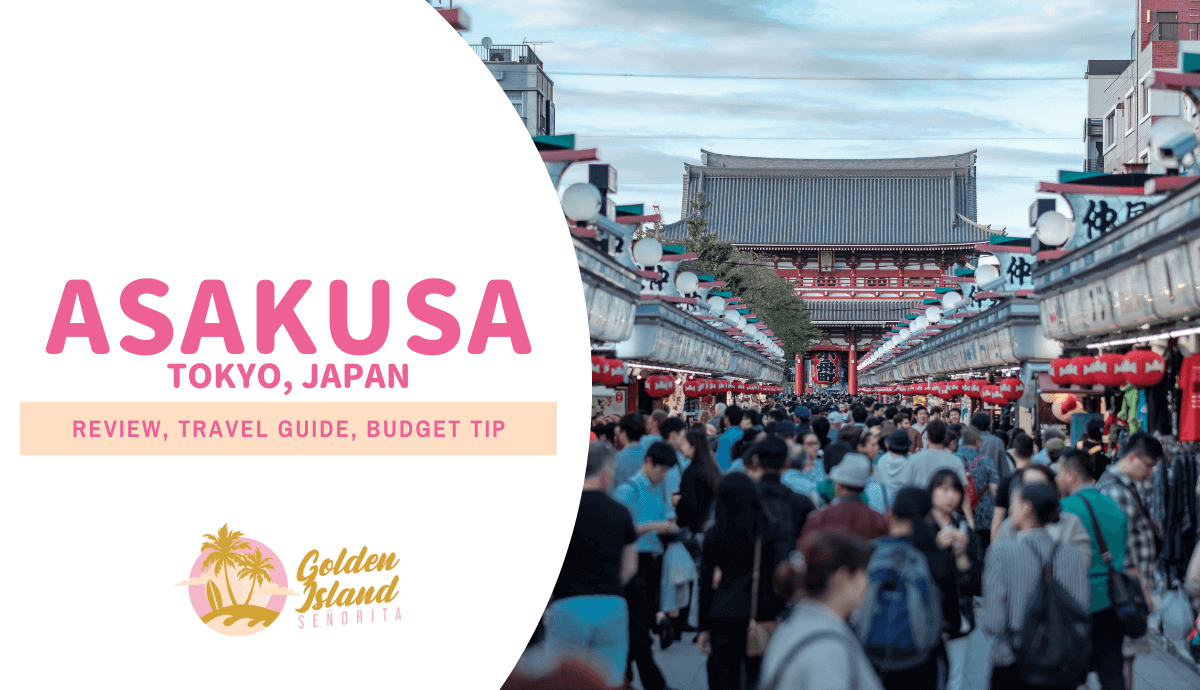Asakusa stands as a testament to the city’s rich cultural heritage and vibrant atmosphere. This historic district is renowned for its ancient temples, traditional architecture, bustling markets, and a deep connection to Tokyo’s past. Whether you’re a history enthusiast, a food lover, or simply seeking to immerse yourself in Tokyo’s charm, Asakusa offers a captivating journey through time and tradition.
A Glimpse Into Asakusa’s Past
It’s history dates back centuries, evolving from a small fishing village along the banks of the Sumida River to a thriving cultural hub in Tokyo. Its prominence grew during the Edo period (1603-1868), when it became a center for entertainment, attracting kabuki theaters, geisha houses, and a lively market culture. Despite suffering damage during World War II, it has preserved its historic charm and remains a cherished destination for locals and tourists alike.
Where is Asakusa Located?
Situated in the Taito ward of Tokyo, Japan, on the northeastern edge of the city center. It is easily accessible from major transportation hubs, making it a convenient stop for travelers exploring Tokyo.
How to Get to Asakusa
Asakusa is easily accessible via various modes of transportation. Whether you’re arriving from Narita Airport, Haneda Airport, or within Tokyo itself, here’s how to reach Asakusa conveniently:
From Narita Airport
- By Train (Keisei Skyliner and Tokyo Metro):
- Take the Keisei Skyliner from Narita Airport to Nippori Station (about 36 minutes).
- Transfer to the JR Yamanote Line or the Keihin-Tohoku Line to Ueno Station (5-10 minutes).
- From Ueno Station, transfer to the Tokyo Metro Ginza Line and ride to Asakusa Station (about 5 minutes).
- By Airport Limousine Bus:
- Board the Airport Limousine Bus bound for Tokyo City Air Terminal (TCAT) or Asakusa.
- The journey takes approximately 75-90 minutes, depending on traffic conditions.
From Haneda Airport
- By Train (Keikyu Line and Toei Asakusa Line):
- Take the Keikyu Line from Haneda Airport to Asakusabashi Station (about 35 minutes).
- Transfer to the Toei Asakusa Line and ride to Asakusa Station (about 3 minutes).
- By Airport Limousine Bus:
- Board the Airport Limousine Bus bound for Asakusa (about 45-60 minutes, depending on traffic).
From Tokyo Station
- By Train (JR Yamanote Line and Tokyo Metro Ginza Line):
- Take the JR Yamanote Line from Tokyo Station to Kanda Station (1 minute).
- Transfer to the Tokyo Metro Ginza Line and ride to Asakusa Station (about 5 minutes).
- By Taxi:
- Taxis are readily available at Tokyo Station and can take you directly to Asakusa in approximately 15-20 minutes, depending on traffic.
Within Tokyo
- By Tokyo Metro:
- Asakusa is served by the Tokyo Metro Ginza Line (G19), Asakusa Line (A18), and Tobu Skytree Line.
- Use the Ginza Line for direct access to Asakusa Station from popular areas like Shibuya, Ginza, and Ueno.
- By Bus:
- Various bus routes connect Asakusa to other parts of Tokyo, offering a scenic way to travel within the city.
Travel Tips
- IC Cards: Consider purchasing a Suica or Pasmo IC card for seamless travel on trains and buses in Tokyo.
- Navigational Apps: Use apps like Google Maps or Japan Travel by NAVITIME for real-time train schedules and navigation assistance.
- Peak Hours: Avoid traveling during rush hours (typically 7-9 AM and 5-7 PM) to minimize crowds and ensure a more comfortable journey.
- Ticket Adjustment: Just in case you purchased a ticket that’s lesser the amount required you may have it ‘readjusted’ at your destination (in this case, Asakusa station). Just ask the station staff. They are very friendly!
Things to Do in Asakusa
Take a Rickshaw Ride and Get to Know Asakusa More Deeply.
Sit back and relax as your knowledgeable driver peddles you past some of the city’s iconic sites, lovely gardens, towering skyscrapers and historic shops, passing cherry and maple trees as you go. It’s a great way to take a relaxed, informative, ride through this atmospheric area of Tokyo. You may customize your ride by this time, I let my driver, Daisuke do his thing.
Admire the Sensō-ji Temple
Visit Tokyo’s oldest and most famous Buddhist temple, known for its striking red Kaminarimon Gate and Nakamise shopping street.
Yukata Shopping at Nakamise-dōri.
Pick up a traditional yukata (summer kimono) from one of the shops on Nakamise Street and experience wearing it while exploring Asakusa.
- Why Visit: This bustling street offers a glimpse into traditional Japanese shopping with over 90 shops selling snacks, souvenirs, and local crafts.
- Fun Fact: Nakamise-dori has been a marketplace for centuries, originally catering to pilgrims visiting Senso-ji Temple.
Asakusa Culture and Tourist Information Center
- Why Visit: Besides its stunning architecture and views, it’s a perfect starting point to gather information about Asakusa’s attractions and events.
- Fun Fact: The building’s design resembles a stack of traditional Japanese paper lanterns, blending modern aesthetics with traditional symbolism.
Sumida Park
Visit during cherry blossom season for a picturesque hanami (flower viewing) experience, or simply relax by the riverside and enjoy the view of Tokyo Skytree.
- Why Visit: Known for its cherry blossoms in spring, Sumida Park offers a tranquil escape along the Sumida River, ideal for hanami picnics and scenic walks.
- Fun Fact: The park hosts the Sumida River Fireworks Festival, one of Tokyo’s largest fireworks displays, drawing over a million spectators annually.
Asakusa Shrine (Sanja-sama)
Visit this Shinto shrine known for its lively festivals and historic ties to the Asakusa district.
Tokyo Skytree
Consider visiting in the evening for breathtaking night views of Tokyo’s skyline, or during the day to see Asakusa from above and spot other Tokyo landmarks.
Asakusa Engei Hall
Check their schedule for performances like rakugo or traditional music shows, and immerse yourself in Japan’s rich cultural heritage.
- Why Visit: Experience traditional Japanese entertainment such as rakugo (comic storytelling) and manzai (stand-up comedy), providing a glimpse into Japan’s comedic arts.
- Fun Fact: Rakugo, a form of sit-down comedy, dates back to the Edo period and features a lone storyteller narrating humorous tales with minimal props.
Edo-Tokyo Museum
Dive deep into Tokyo’s history with interactive exhibits and life-size replicas of Edo-era buildings, providing a vivid glimpse into the city’s past.
- Why Visit: Dive into Tokyo’s history from the Edo period to modern times through interactive exhibits, scale models, and artifacts.
- Fun Fact: The museum’s architecture resembles an elevated warehouse symbolizing the city’s resilience after the devastating Great Kanto Earthquake of 1923.
Hoppy Street
Sample local snacks and hoppy, a popular low-alcohol beverage, at the izakayas lining this nostalgic alley. It’s a great spot for a casual evening meal.
- Why Visit: Explore this nostalgic alley filled with izakayas serving local street food and hoppy, a popular low-alcohol beverage.
- Fun Fact: Hoppy, originally developed as a beer substitute during post-war rationing, remains a beloved drink among locals for its refreshing taste.
River Cruises
Opt for a sunset cruise for a romantic experience, or a daytime cruise for a leisurely sightseeing tour along the Sumida River, offering unique perspectives of Asakusa and beyond.
- Why Visit: Enjoy a leisurely boat ride along the Sumida River for stunning views of Tokyo’s skyline and iconic landmarks.
- Fun Fact: The Sumida River has been a vital transportation route in Tokyo since ancient times, connecting the city to the sea and promoting trade and cultural exchange.
Food Visitors Should Try
Tokyo’s Finest Street Food
Sample local delicacies like senbei (rice crackers), ningyo-yaki (sweet filled cakes), and tempura from street vendors along Nakamise Street.
Asakusa Sushi Shops
Visit traditional sushi restaurants for authentic sushi and sashimi.
Sengoku Ramen
Oh, I found this gem of a restaurant through the lady who sold me my kimono. She insisted it’s one of the top spots for Gyoza and Ramen, and boy, was she right! The food was delicious, and the service? Absolutely top-notch.

Gyoza (290 JPY)

Ochoron Ramen (780 JPY)

Yakisoba
Tips for Travelers Visiting Asakusa
- Visit Early or Late: To avoid the crowds, visit popular attractions like Senso-ji Temple early in the morning or later in the evening.
- Comfortable Footwear: Asakusa is best explored on foot, so wear comfortable shoes as you’ll likely be walking a lot.
- Cash is Preferred: Many smaller shops, street vendors, and traditional restaurants may prefer cash over credit cards, so it’s a good idea to carry enough yen.
- Respect the Temples and Shrines: When visiting Senso-ji Temple and Asakusa Shrine, be mindful of the sacred nature of these places. Respect local customs such as bowing and cleansing rituals.
- Try Local Street Food: Don’t miss out on sampling local delicacies such as senbei (rice crackers), ningyo-yaki (sweet filled cakes), and tempura from the street vendors along Nakamise Street.
- Useful Apps: Consider downloading navigation apps like Google Maps or Japan Travel by NAVITIME for easier navigation around Tokyo.
- Learn Basic Japanese Phrases: While many locals in Asakusa may speak some English, learning a few basic Japanese phrases like greetings and polite expressions can enhance your interactions and experiences.
- Visit During Festivals: If possible, plan your visit during one of Asakusa’s festivals, such as the Sanja Matsuri in May, to witness traditional performances and vibrant celebrations.
- Explore Beyond the Main Attractions: While Senso-ji Temple and Nakamise Street are must-visits, take time to wander through the quieter streets of Asakusa to discover hidden gems, local cafes, and traditional shops.
- Take in the View: For stunning views of Asakusa and Tokyo, consider visiting the Tokyo Skytree or the Asakusa Culture and Tourist Information Center’s observation deck.
Final Thoughts
Asakusa offers a unique blend of history, culture, and modernity that captures the essence of Tokyo’s diverse appeal. Whether you’re captivated by ancient temples, intrigued by traditional performances, or simply seeking to savor Tokyo’s culinary delights, Asakusa promises an unforgettable experience. Embrace the spirit of this dynamic district as you explore its treasures and create lasting memories in the heart of Japan’s capital city.
Have you ever visited Asakusa in Tokyo? If so, which of these activities was your favorite? Let me know in the comments section below.


1. Check out my Tokyo Travel Guide for First-Time Visitors.
2. Passport and Travel Documents
3. Fast & Hassle-Free Visa Application with iVisa
4. Get a Travel Insurance with SefetyWing
5. Book a Flight with Google Flights or Expedia
6. Book your hotel/accommodation with Agoda, or Airbnb
Luxury Hotels: Hyatt Regency Tokyo, Keio Plaza Hotel Tokyo, Hilton Tokyo
Mid-Range Hotel: Mitsui Garden Hotel Jingugaien, Hotel Gracery Shinjuku, APA Hotel Shinjuku Kabukicho, Citadines Shinjuku Tokyo
Budget Hotel: Sakura Hotel Jimbocho, Hotel Rose Garden Shinjuku, THE KNOT TOKYO, Shinjuku Washington Hotel
7. Transportation passes: Welcome Suica Card & Tokyo Metro Tickets with Klook
8. Rent an unlimited data Pocket Wifi Router.
9. Are you crossing from one city to another? Book a JR Pass to make your trip a breeze.
EXTRA: Surviving long-haul flights tip – The Ultimate Survival Guide For Long-Haul Flights in Economy



It looks like anyone would have a great time here . I am especially interested in the food . Looks like quite an exotic treat .
Rickshaw rides are such fun! This looks like a great trip – especially the food – I love trying new things!
It looks like you had such a fun time! Traveling is always a good way to get to experience new things.
This looks amazing! My husband and I really want to plan a trip to Japan, and this is going to make him even more excited!
Japan is always somewhere in the top in my bucket list of places to visit, I am going to mark this place too so I can visit while I go to Japan.